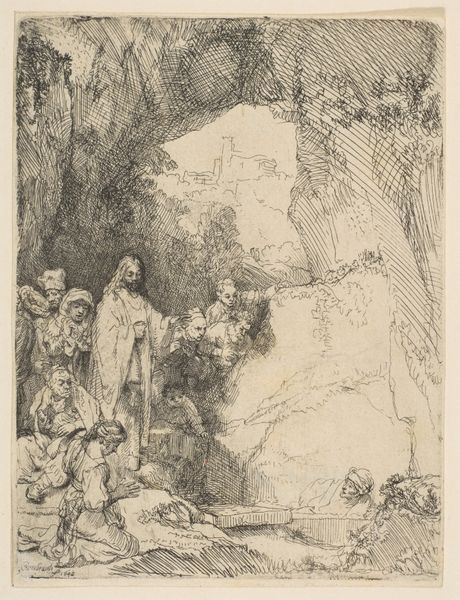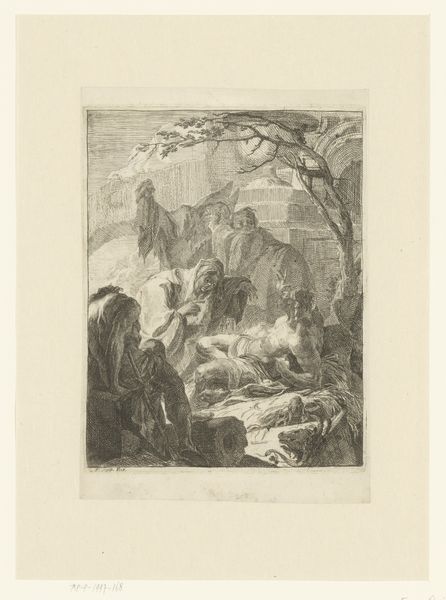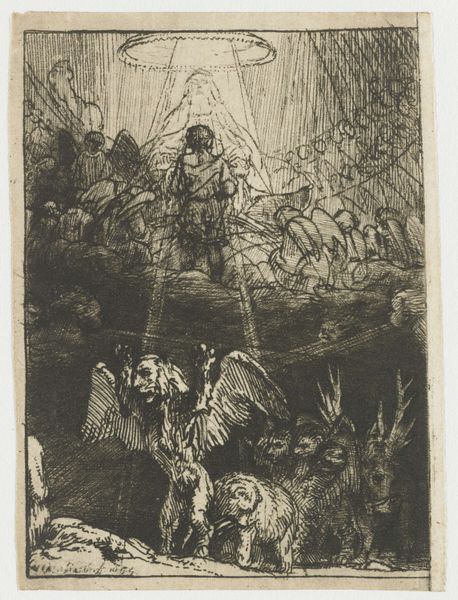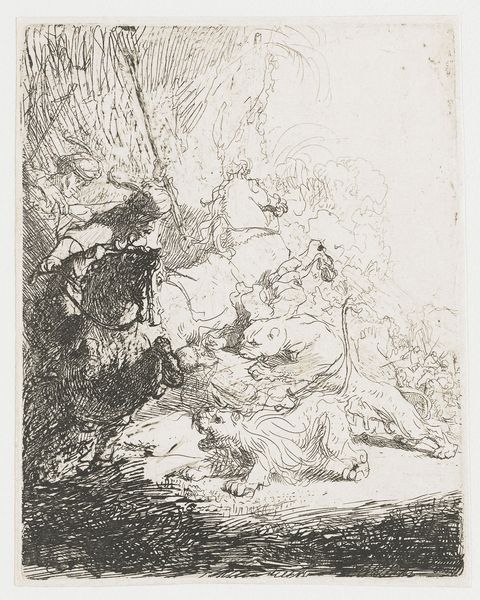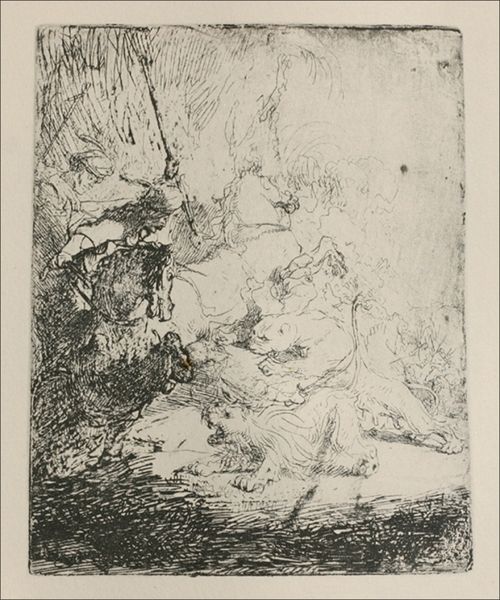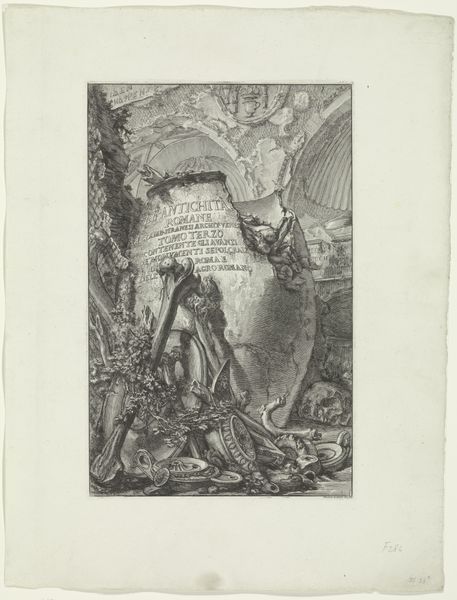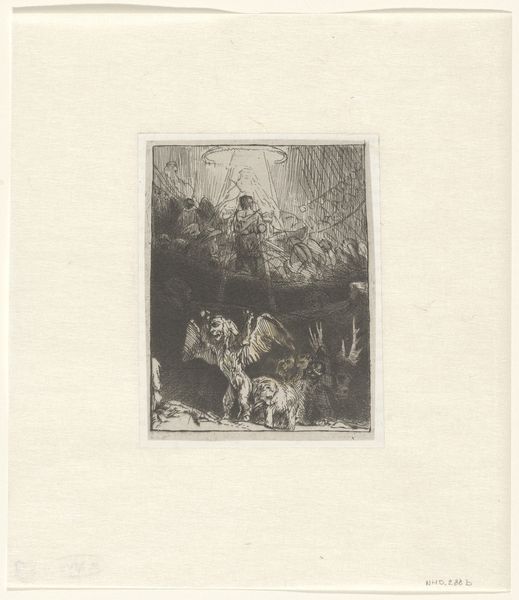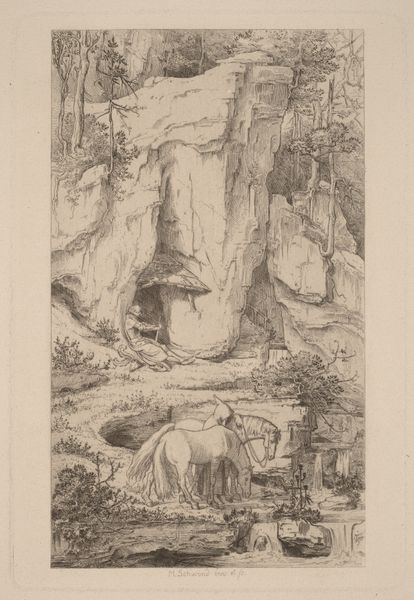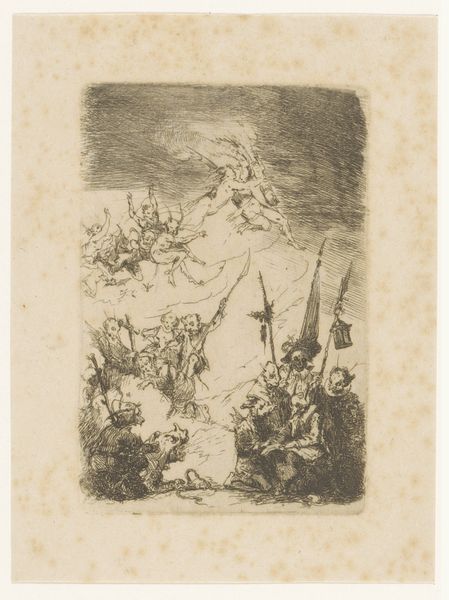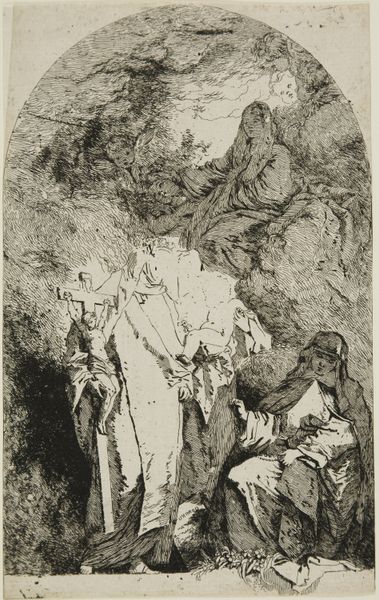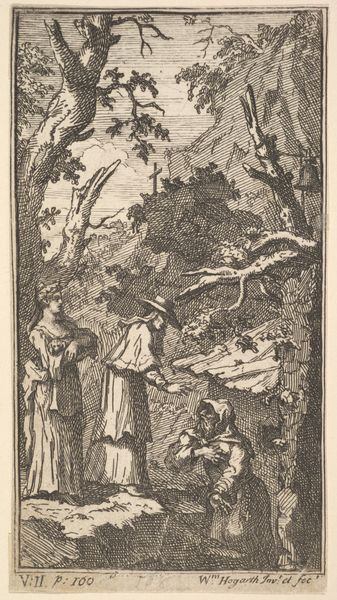
Dimensions: height 149 mm, width 111 mm
Copyright: Rijks Museum: Open Domain
Curator: This etching is Rembrandt van Rijn's "The Raising of Lazarus: small plate," likely created around 1642, although prints were made up to 1906. It's part of the Rijksmuseum collection. The use of light is really striking. Editor: It is, although the small size renders a mood of stifled drama. The dense cross-hatching evokes a tangible darkness, but does it successfully convey spiritual revelation, or just claustrophobia? Curator: The formal composition, I believe, emphasizes a deliberate contrast. Note how the deep shadow on the left contrasts against the blinding light erupting from the tomb. This visual division enhances the overall emotional impact. The cross-hatching builds volume to sculpt dark figures surrounding the lightness around the entrance of the tomb and to Lazarus, highlighting a balance that mirrors its subject matter. Editor: Yet isn’t the scene inherently about the power dynamics at play? Christ, a figure of authority, commands Lazarus, a powerless individual bound by death. The clustered figures bear witness, their social standing a spectrum from pious beggar to wealthy landowner. Can we divorce this miracle from the realities of the seventeenth century's rigidly stratified society? Curator: The way that Rembrandt employs hatching, especially its density, really helps set off each layer from each element of the scene. Notice also the various figures; we can consider those figures and their scale or placement in the work based on where they would’ve fallen on a hierarchy, where he would place emphasis, but isn’t his virtuosity on full display by placing Lazarus at the center through the tonal effect he uses on the plate? Editor: I’m compelled by its narrative potential, of course, but I find Rembrandt’s understanding of the body politic to be the key subject. This is also a meditation on gendered social stratifications. Take note of the women positioned on the peripheries of this miraculous spectacle as their bodies negotiate the intersection of class, sanctity, and the tangible hope that rests with a divine future. Curator: These interpretive tensions, of course, mirror life’s complexities—Rembrandt offers us both a refined work of form and an intricate view into spiritual awakening. Editor: A potent reminder that no masterpiece exists in a vacuum—context shapes perception.
Comments
No comments
Be the first to comment and join the conversation on the ultimate creative platform.
